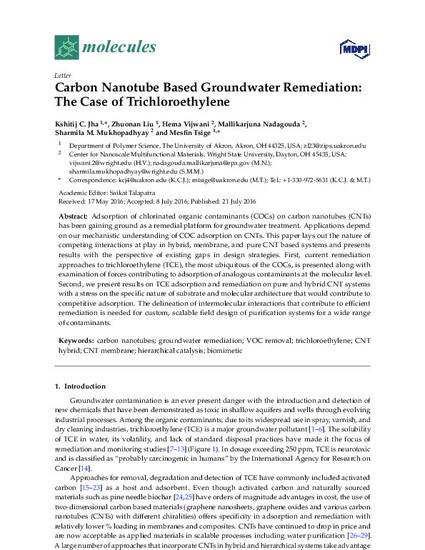
Adsorption of chlorinated organic contaminants (COCs) on carbon nanotubes (CNTs) has been gaining ground as a remedial platform for groundwater treatment. Applications depend on our mechanistic understanding of COC adsorption on CNTs. This paper lays out the nature of competing interactions at play in hybrid, membrane, and pure CNT based systems and presents results with the perspective of existing gaps in design strategies. First, current remediation approaches to trichloroethylene (TCE), the most ubiquitous of the COCs, is presented along with examination of forces contributing to adsorption of analogous contaminants at the molecular level. Second, we present results on TCE adsorption and remediation on pure and hybrid CNT systems with a stress on the specific nature of substrate and molecular architecture that would contribute to competitive adsorption. The delineation of intermolecular interactions that contribute to efficient remediation is needed for custom, scalable field design of purification systems for a wide range of contaminants.
Available at: http://works.bepress.com/sharmila_mukhopadhyay/83/

c 2016 by the authors; licensee MDPI, Basel, Switzerland. This article is an open access article distributed under the terms and conditions of the Creative Commons Attribution (CC-BY) license (http://creativecommons.org/licenses/by/4.0/).